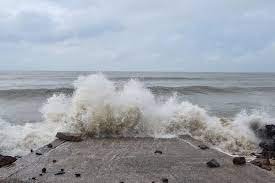Cyclone Michaung to Hit Bay of Bengal: The Fourth Storm This Year
Cyclones are natural phenomena that pose significant threats to coastal regions. The Bay of Bengal, known for its vulnerability to cyclones, is yet again on alert as Cyclone Michaung intensifies. This impending cyclone marks the fourth major storm this year in the region, raising concerns for safety and infrastructure.
The meteorological departments across affected nations have issued warnings, urging proactive measures. As Michaung gains momentum, the anticipated impact on coastal areas is a cause for heightened preparedness. Given the frequency and intensity of cyclones in recent years, understanding and adapting to these weather patterns are crucial.

Why this News is Important:
Anticipated Impact on Coastal Regions
The impending cyclone’s potential impact on coastal communities necessitates preparedness measures. Coastal areas face risks of flooding, high winds, and disruptions to daily life, emphasizing the importance of timely warnings and safety protocols.
Need for Proactive Measures
The recurrence of cyclones in the Bay of Bengal underlines the necessity of proactive planning. Authorities and residents alike must implement preventive measures, including evacuation plans and securing critical infrastructure.
Historical Context:
The Bay of Bengal’s Vulnerability: The Bay of Bengal is prone to cyclones due to its geographical location and warm sea surface temperatures. Historical data reveals a pattern of cyclones striking the region, necessitating improved disaster management strategies.
Past Cyclones and Their Impact: Cyclones like Amphan, Phailin, and Yaas have previously ravaged the Bay of Bengal’s coastal areas, leaving behind devastation and highlighting the region’s susceptibility to such natural disasters.
Key Takeaways from “Cyclone Michaung to Hit Bay of Bengal”:
| Serial Number | Key Takeaway |
|---|---|
| 1. | Michaung marks the fourth major cyclone this year. |
| 2. | Coastal areas need to brace for potential impact. |
| 3. | Proactive measures are crucial for safety. |
| 4. | Understanding economic implications is essential. |
| 5. | Historical context emphasizes the region’s vulnerability to cyclones. |
Important FAQs for Students from this News
Q: How does the Bay of Bengal’s geography contribute to cyclone formation?
A: The Bay of Bengal’s warm sea surface temperatures and its geographical location contribute to the formation and intensification of cyclones.
Q: What measures can coastal communities take to prepare for an impending cyclone?
A: Coastal communities can prepare by implementing evacuation plans, securing loose items, stocking essential supplies, and heeding weather warnings.
Q: What are the potential impacts of Cyclone Michaung on the region?
A: Cyclone Michaung may bring flooding, strong winds, infrastructure damage, disruptions to daily life, and economic setbacks to affected areas.
Q: Why is understanding the historical context of cyclones in the Bay of Bengal important?
A: Historical data on past cyclones in the region helps in formulating improved disaster management strategies and preparedness plans.
Q: How does the recurrence of cyclones in the Bay of Bengal affect various sectors like agriculture and infrastructure?
A: Cyclones can severely impact agriculture, fishing, and infrastructure, leading to economic losses and requiring post-disaster recovery strategies.
Some Important Current Affairs Links















